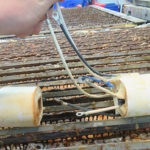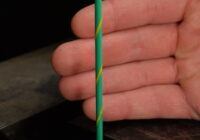
Apr 17, 2022
Custom Wire Harness Assembly for Transformers
Table of Contents
- Wire Harness Assembly Introduction
- Voltage and Temperature Ratings for Transformers
- Insulation and Protection for Custom Wire Harnesses in Transformers
- Length, Dimensions and Tolerances of Wire Harnesses in Transformers
- Questions to Ask Before Buying a Wire Harness for a Transformer
This article explains the complex and detailed procedure for creating custom wire harness assemblies for transformers. The article will address the initial risk assessment, bare wire insulation protection, voltage and temperature requirements, size and type of transformer, followed by a question and answer section that will address the most common concerns.
Wire and cable products transmit electrical current in order to turn on transformers and keep them running. They require a large size cord product to power the entire machine along with multiple wire harnesses inside the unit to keep it running smoothly. Custom wire harness assembly manufacturers need to have multiple conversations with these customers and conduct a full risk assessment before producing an order for transformer assemblies. Bare copper wire needs insulation protection from things that it might come in contact with throughout its life. There are also voltage and temperature requirements that depend on the size and type of transformer. Finally, there are questions raised about risk, such as the overall length of the harness which can’t be too long or too short.
Voltage and Temperature Ratings for Transformers
Standard types of insulation covering copper wire range in temperature and voltage based on exposure. For example, UL1007 PVC hook up wire is very common and it’s been tested by UL to be exposed for life to temperatures up to 105°C and up to 300 volts. Anything that doesn’t fit into that window needs to be assessed to figure out how high the voltage needs to be or how high, or low, the temperature needs to be. For example, using wire for a walk-in freezer will be quite different than the wire used near the hot engine of a car. The manufacturer needs to go over this list of requirements with the customer long before any production starts because the cost could be higher and the lead time could be longer.
Transformers typically need 600 volt wire, but go up to 15kV and higher, along with a temperature rating of 150°C or higher. Parts of the transformer will need to be heated in ovens at high temperatures to melt the varnish around the unit, and therefore, need to protect the copper with insulation that can withstand oven level heat. Assembly manufacturers will cut the wire, strip the insulation from each end, crimp terminals and make magnet wire coils for the transformer manufacturers. Once received, the wire harnesses can be put through the varnishing process and eventually into the transformer construction.
Insulation and Protection for Custom Wire Harnesses in Transformers
If you pour water all over a spool of bare copper without insulation the copper will get corroded and less affective, or completely defective, when connected in an application. There are various types and levels of insulation protection to resist water, oil, solvents, gas, chemicals, weather, rodents, terrain and even certain levels of impact resistance. These things need to be discussed with the customer to determine which items need resistance in their particular application in order to find the accurate wire to support their needs. For example, oil and grease are used to provide maintenance and could come in contact with the wire, so the insulation needs to resist both. Some transformers are powered by gas so the wire may or may not need gas resistance. All of these types of liquids need to be discussed and considered when finding the right type of insulation for the wire or cable.
Transformers can use either copper or aluminum wire, but more often use copper. Even though it’s heavier and more expensive than aluminum, copper is a better conductor of electricity and has many more variations of insulation available to choose from. Magnet wire is used in the coils while insulated wire is used for connections. The insulated wire is also coated with a varnish or enamel in air cooled transformers to prevent the conductors from shorting together.
Length, Dimensions and Tolerances of Wire Harnesses in Transformers
Most wire harness design starts with a drawing created by the customer’s engineers. After reviewing the insulation, temperature and voltage requirements, the engineers can put together the harness drawing knowing that the wires will last in the particular type of transformer. Now they will be busy working on the exact dimensions, connectors, housing, labels, tubing and sleeving products that accompany the full wire harness. In a perfect world the customer will receive the harness and plug it into their transformer without having to complete any additional work. Nor should they have to conduct tests for voltage and temperature to see if it can withstand the approvals they requested because it will have already been tested by the manufacturer of the wire, along with a third party (UL). If the overall length is too short it can’t be used at all, and it the overall length is too long it could waste room in the transformer and cost additional money for materials.
Transformers use copper instead of aluminum for electrical conductivity and for size. Copper is heavier but less is needed for the same approvals of electrical current and testing, meaning the overall unit size is smaller when using the more expensive copper. Therefore, size matters in the construction of transformers, and that goes for the size of the wire harnesses and magnet wire coils. When the lengths and dimensions are given with tolerances it’s important to meet those tolerances as a wire harness assembly manufacturer. Also, smaller isn’t always better. Transformer manufacturers need each part to fit in its desired spot without being too large or too small, so it’s better to create the exact design within tolerances rather than trying to assume that the customer wants something other than what they asked to have.
Questions to Ask Before Buying a Wire Harness for a Transformer
What are the highest and lowest voltages that will travel through the wire?
The wire insulation depends on the highest voltage level and needs to be accurate. For instance, if the transformer will never reach more than 500 volts than a 600 volt wire would be recommended. Typical wire voltage levels rise quickly from 300 to 600 to 1000 to 2000, so the next level will always be the ideal choice. More often than not, the copper and insulation thicknesses will increase as voltage increases.
What are the highest and lowest temperatures that will come in contact with the wire?
The wire insulation depends on the highest and lowest temperature level and needs to be accurate. For instance, if the transformer has a low range near 20°C and a high range near 130°C than a 150°C wire would be recommended. Typical wire temperature levels rise from 105°C to 125°C to 150°C to 200°C, so the next level will always be the ideal choice
What “might” come in contact with the wire?
Liquids are especially necessary to understand before choosing the best wire for any application because some can quickly eat through the insulation and compromise the copper conductivity. Think about water, oil, solvents, gas and chemicals, and then be specific with your vendor so that they can fit you with the best wire insulation. You don’t want underqualified wire to become an issue once the entire transformer is produced because wires are typically hidden deep inside. You also don’t want to over pay for unnecessary approvals such as 300°C when your highest level of heat is only 150°C.
Even if you don’t ask these questions be assured that your vendor will ask you to answer them with confidence. Even if you don’t know the exact voltage or temperature you need to know a range to get a confident quote for the wire that you plan to use.
If you need help with wire harness assembly, don’t hesitate to contact our team at WesBell Electronics! We have decades of experience assembling all types of wires, preparing them to be ready to go for any project you have.
Get in touch today to learn more about our services and how we can help!









